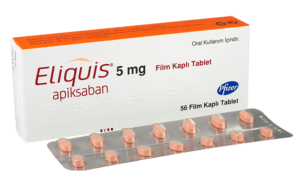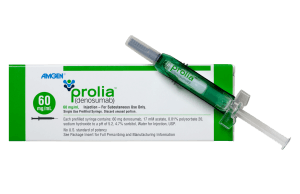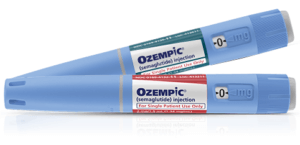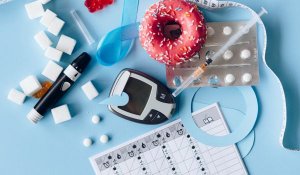
Note to readers. There’s no universal terminology for expressing blood glucose levels – it’s a matter of local practice and preference. To keep this article simple, I will refer to levels using the most common measure, which is milligrams per deciliter (mg/dL), and to avoid constant repetition, I’m not going to append the mg/dL onto every number. According to the World Health Organization (WHO), normal fasting blood sugar levels for a person without diabetes range from 70 to 100 milligrams per deciliter (mg/dL) or 3.9 to 5.6 millimoles per liter (mmol/L).
What I’ve learned along the way is that even people without diabetes experience blood sugar spikes, especially after consuming sugary foods. For those of us managing diabetes, these targets can look different based on individual needs, and understanding that has been key to finding balance in my own journey.
What should your glucose levels be? 
Since target ranges differ, there isn’t one ideal blood sugar level for everyone. For people with diabetes, the goal is often to keep glucose levels below 140 on average. For those without diabetes, blood sugar typically falls between 70 and 100. Prediabetes may be diagnosed by a healthcare provider if fasting blood sugar is between 100 and 125 or if levels are between 140 and 199 two hours after eating.
The 2024 guidelines from the American Diabetes Association (ADA) provide recommendations used by diabetes professionals. This chart shows goals for different groups of people with diabetes.
- Before eating, adults with type 1 or type 2 diabetes should aim for blood sugar levels between 80 and 130. After eating, their levels should stay below 180.
- Children with type 1 diabetes should have blood sugar between 90 and 130 before meals and between 90 and 150 at bedtime or overnight.
- Pregnant individuals with type 1 diabetes or gestational diabetes should aim for less than 95 before meals. One hour after eating, levels should be 140 or lower, and two hours after eating, below 120.
- For people aged 65 or older, blood sugar before meals should be between 80 and 180. Those with reduced mobility, living in assisted care, or nearing end of life can have levels between 80 and 200.
- For those without diabetes, blood sugar should be 99 or lower before meals and 140 or lower after eating.
Doctors use these guidelines as a baseline. Each person’s goals can differ depending on their specific needs. It’s recommended to consult a doctor to figure out the best approach.
What is a worrisome blood sugar level?
Hyperglycemia (high blood sugar) happens when fasting blood sugar is over 125 or reaches 180 or more within two hours after eating. Hypoglycemia (low blood sugar) occurs when blood sugar drops below 70, but symptoms might not appear until it goes below 55. Severe changes in blood sugar levels, whether too high or too low, can lead to serious health risks and complications.
People should seek medical help right away if they show signs of high or low blood sugar. Symptoms include feeling dizzy, very tired, or nauseous. Other signs are stomach pain, extreme thirst, rapid breathing, a fast heartbeat, confusion, seizures, or loss of consciousness.
Is A1C supposed to be the same as my blood sugar average?
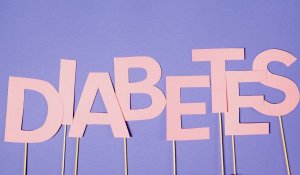
For someone without diabetes, an A1C level should be below 5.7%. A range of 5.7% to 6.4% indicates prediabetes, while 6.5% or higher is classified as diabetes. The CDC recommends keeping A1C at 7% or lower for diabetes management.
It’s necessary to work with a diabetes care team to set an A1C goal that fits individual needs. A1C levels do not show details like glucose swings or variability. They also differ from the average blood sugar readings shown on fingerstick meters or continuous glucose monitors (CGMs). Diabetes specialists use A1C tests along with time in range (TIR) data to check how often a person’s blood sugar stays within their target range.
Should I use a continuous glucose monitor?
A continuous glucose monitor (CGM) checks blood sugar levels every one to five minutes. It shows how food and exercise impact glucose levels and can detect high or low blood sugar as it happens. For those who are unaware of hypoglycemia, it can send alerts about low blood sugar before symptoms appear, helping prevent dangerous situations.
Weight management and blood sugar control
Staying within the weight range recommended for a person’s age and height can help control blood sugar levels and lower the risk of diabetes. Studies show that losing just 5% of body weight can improve how the body manages blood sugar. GLP-1 medications including Ozempic, Wegovy and Mounjaro may be prescribed for both weight management and blood sugar control. These medications have consistently been shown to help people lose weight, decrease their A1C levels, and reduce the risk of diabetes-related complications.
What are some ways to regulate blood sugar naturally?
 Exercise
Exercise
Regular exercise and physical activity help manage weight and improve how the body responds to insulin. Better insulin sensitivity allows cells to process glucose in the bloodstream more effectively. Physical activity also enables muscles to use blood sugar for energy and movement during contractions.
People with blood sugar issues should check their levels before and after exercise to see how different activities affect them and to avoid levels that are too high or too low. Shorter exercise sessions can still add up over time. For example, doing three 10-minute sessions a day, five days a week, can help reach the goal of 150 minutes of exercise weekly.
Short bursts of activity, often called “exercise snacks,” can reduce the negative effects of sitting for long periods. These involve standing up every 30 minutes and moving for a few minutes. Simple activities like walking, squats, or leg raises are recommended.
Manage carbs
Carbohydrates affect blood sugar levels by breaking down into glucose, which the body uses for energy with the help of insulin. If a person eats too many carbs or has issues with insulin, blood sugar levels can increase.
The American Diabetes Association advises people with diabetes to track their carbohydrate intake. Counting carbs helps plan meals and manage blood sugar levels more effectively. Eating a low-carb diet can lower blood sugar levels and reduce spikes.
The glycemic index (GI) shows how fast carbohydrates break down during digestion and how fast they raise blood sugar levels. Foods are ranked on a scale from zero to 100 and grouped into low, medium, or high GI categories. Low GI foods score 55 or less. Eating low GI foods regularly may help lower blood sugar levels in people with diabetes.
Low-carb and no-carb diets are not the same. Managing blood sugar involves eating some carbs, which the body needs. Choosing carbs from whole grains and unprocessed foods can provide better nutrients and help lower blood sugar levels.
Increase fiber
Fiber helps slow down how quickly the body digests carbs and absorbs sugar, leading to a steadier rise in blood sugar levels rather than a quick spike. There are two types of fiber: soluble and insoluble. Soluble fiber has been shown to help manage blood sugar, while insoluble fiber does not have the same effect. The ideal daily fiber intake is about 25 grams for females and 35 grams for males. This equals roughly 14 grams of fiber for every 1,000 calories consumed.
Stay hydrated 
Drinking enough water helps maintain healthy blood sugar levels. It prevents dehydration and allows the kidneys to remove extra sugar through urine. Water and other zero-calorie drinks are the best choices for staying hydrated. Sugar-sweetened drinks should be avoided because they can raise blood sugar levels, lead to weight gain, and increase the risk of diabetes.
Manage stress levels
Stress can raise blood sugar levels. When the body is under stress, it releases hormones like glucagon and cortisol, which increase blood sugar.
Managing stress can help reduce these effects. Some methods of stress management include exercise, meditation, mindfulness, deep breathing, journaling, arts and crafts, therapy, or engaging in hobbies. Practices like yoga and mindfulness-based stress reduction may also improve insulin function.
Get enough sleep
Poor sleep habits and not getting enough rest can raise blood sugar levels and reduce insulin sensitivity, increasing the risk of type 2 diabetes. It can also lead to a bigger appetite and weight gain. Lack of sleep raises cortisol levels, which affects how the body manages blood sugar. Adults should aim for seven to eight hours of good-quality sleep each night. Both the amount and quality of sleep matter.
FAQs
What is the blood glucose level range for type 2 diabetes?
Normal glucose levels range between 70 and 99. For individuals with undiagnosed Type 2 diabetes, blood sugar levels are often 126 or above.
What is the prediabetes range?
Typically, a blood sugar level between 100 and 125 indicates prediabetes. A reading of 126 or higher on two separate occasions confirms a diabetes diagnosis.
What is considered a blood sugar spike?
A blood sugar spike is a rapid rise in blood glucose levels exceeding 1.7 mmol/L.
How do you feel when your blood glucose levels are too high?
The first signs of hyperglycemia may include feeling excessively thirsty or hungry, needing to urinate frequently, and experiencing headaches.

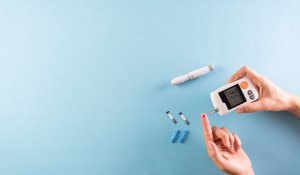
 Exercise
Exercise





